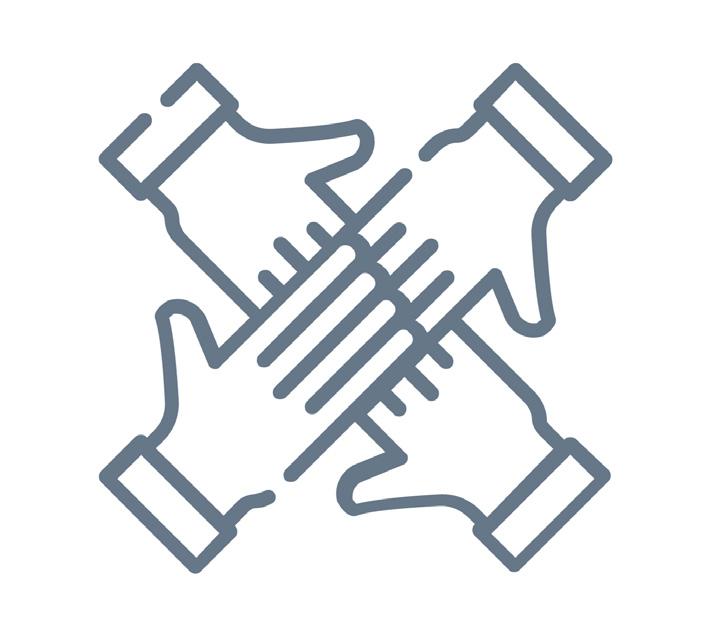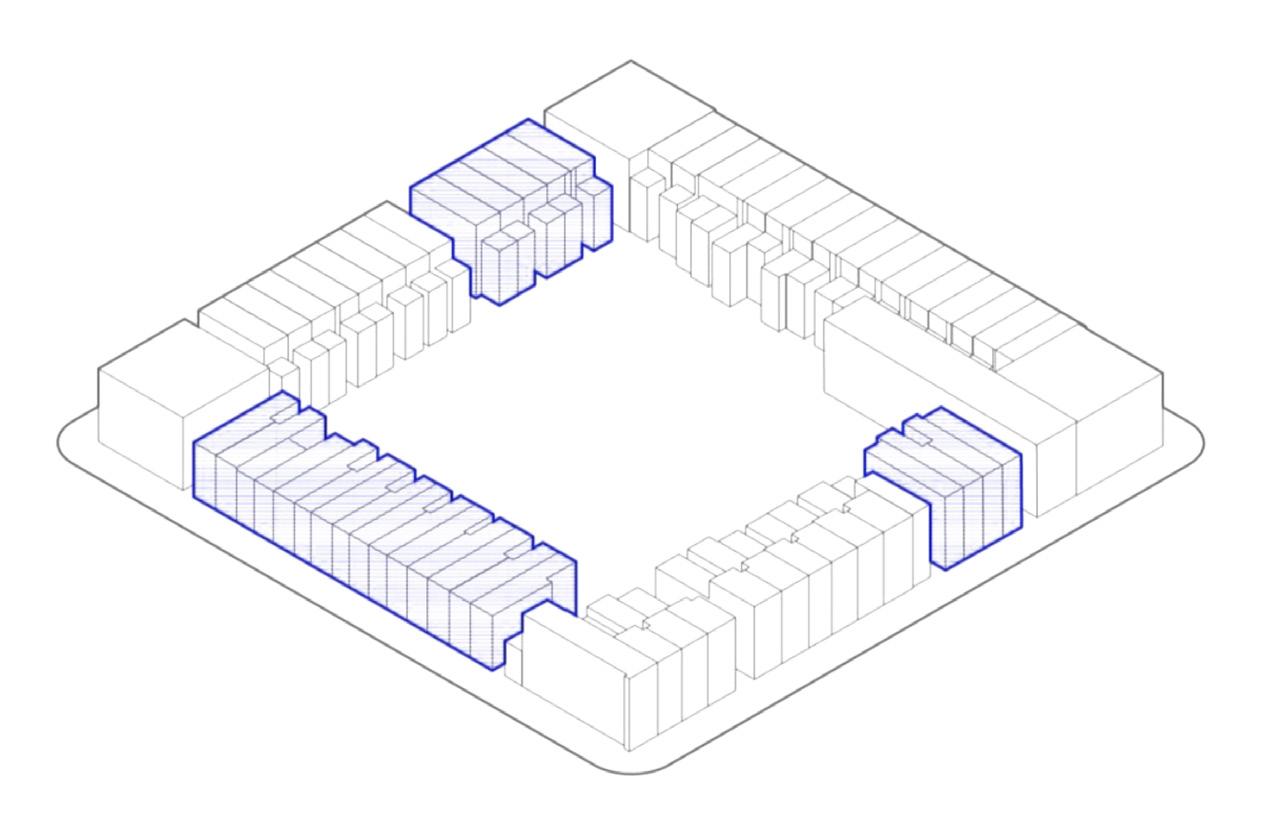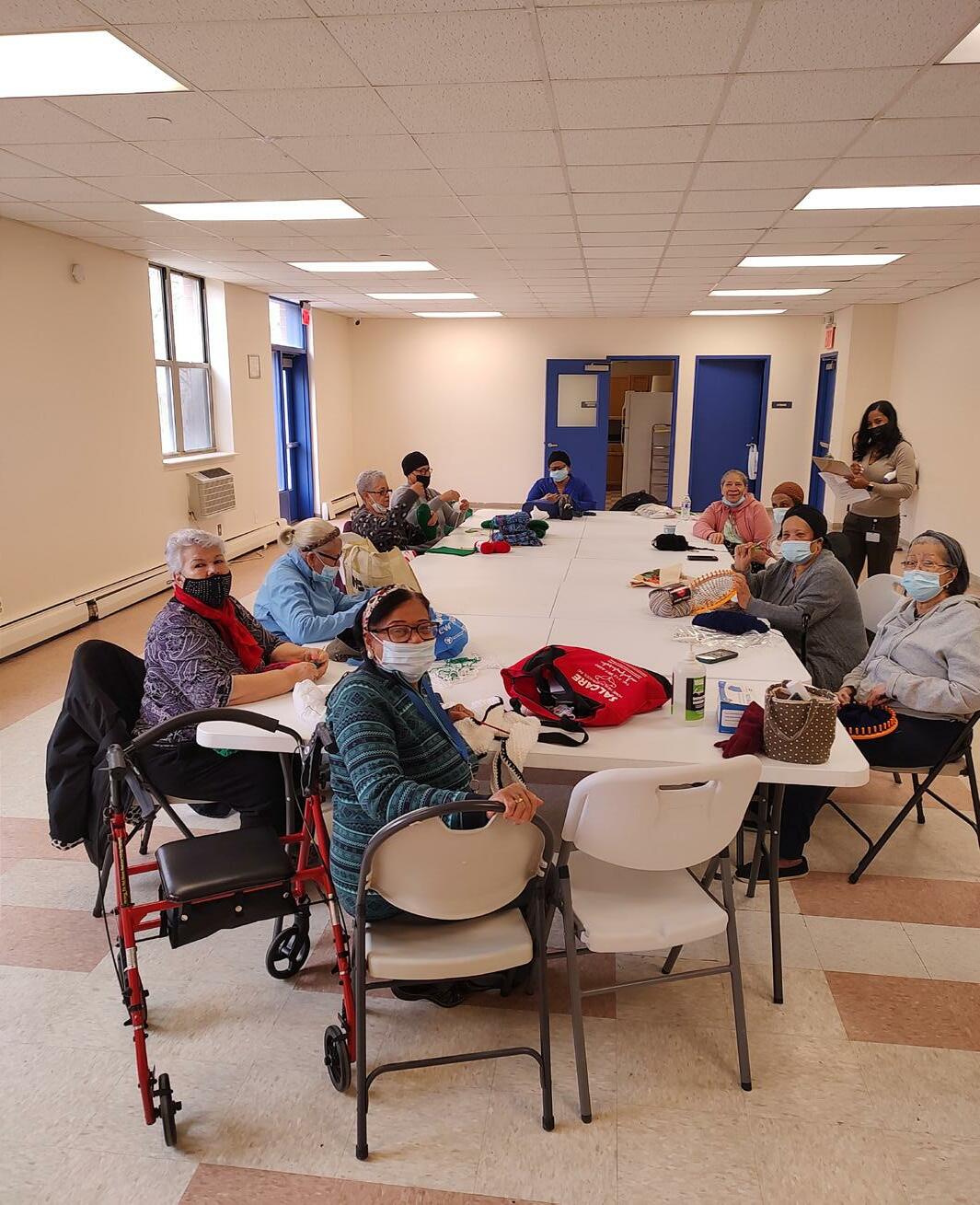
4 minute read
Envisioning a Community of Care in The Bronx
by Pratt GCPE
A PILOT PROJECT FOR CAREGIVER AFFORDABLE HOUSING FOR A RESILIENT ECONOMY (CAHRE)
By James Tschikov and Kevin Garcia PLAN 820 Land Use & Urban Design Studio
Advertisement
Faculty
Mercedes Narciso
Jina Porter
Eva Hanhardt
Ayse Yonder
Studio Members
Agata Naklicka
Amelia Clark
James Tschikov
Kevin Garcia
Kieran Micka-Maloy
Leanna Molnar
Lindsey Cassone
Matthew Marani
Michaela Brocchetti
Natt Slober
Nischala Namburu
Rita Musello-Kelliher
Shelby Ketchum
Suzanne Goldberg
Introduction
Community resilience comes in many forms and affects various sectors of our population. The COVID-19 pandemic exposed gaps in critical infrastructure that presented challenges in public health, community care, workforce, and housing for New York City leaders to address in the years to come. Today, there is a rising need for athome healthcare that is a direct result of the aging and disabled population. New Yorkers aged 65 and older are projected to grow by approximately 41 percent by 2040.1 This is coupled with the overworked, understaffed, and under-resourced home care workforce, who are critical to providing healthcare for the elderly and people with disabilities. The high turnover rate within the homecare industry, as well as the more than 20,000 job openings in the field, are a result of the myriad challenges faced by workers, including low wages, long commute times, and gaps in basic support.2
The Caregiver Affordable Housing for a Resilient Economy (referred to as CAHRE) is a concept based on a nexus between community healthcare needs and the provision of deeply affordable housing for low- and moderate-income healthcare providers. The Pratt GCPE Spring 2022 Land Use and Urban Design Studio built upon the initial framework of the model introduced by the Collective for Community, Culture, and Environment (CCCE) and developed proposals for holistic community care infrastructure working with 1199 SEIU and Highbridge Community Development Corporation (HCDC) in The Bronx. The studio team investigated the need for an integrated care network, approached housing design through a feminist lens, and expanded beyond the limitations of affordable housing programs to develop an equitable model for vulnerable workforce populations.

BACKGROUND & CONTEXT
Four faculty members who led and advised the student’s work throughout the studio are a part of The Collective for Community, Culture, and Environment (CCCE) who developed the CAHRE concept. The CCCE is a women-owned and led planning, architecture, and urban design practice and interdisciplinary professional network based in New York City, with projects throughout the tri-state region driven by their mission to develop a sustainable and equitable world.
The CAHRE Model provides strategies that uplift care workers, while also raising awareness of the challenges that this workforce of “Home Health Heroes’’ endured during the COVID-19 pandemic within existing housing and healthcare systems. CAHRE creates opportunities for home healthcare workers to live in close proximity to their clients, facilitates social infrastructure, and encourages community support.
The CAHRE concept developed by the CCCE addresses various elements of infrastructure:
• Hard Infrastructure: The physical systems of housing, open space, and transportation.
• Soft Infrastructure: Institutions that help maintain a healthy economy, which include investing in human capital and serviceoriented systems, such as education, health, finance, security, government, and more.
• Critical Infrastructure: Assets defined as the most crucial to a functioning economy, such as shelter, public health, food, etc.
“Care workers, who are mainly people of color, women, and immigrants, are the backbone of society, especially at times of emergency but their work is undervalued, underpaid, and ignored. CAHRE model addresses the affordable housing issue from a class, race, and gender perspective.”
A PILOT FOR HIGHBRIDGE, BRONX
Highbridge, Bronx was selected for the pilot project of the CAHRE concept due to the high number of home healthcare workers who reside in the neighborhood, and it being a more affordable NYC neighborhood for those working on a lower-wage salary.
As a client of this studio interested in piloting the model, the Highbridge Community Development Corporation (HCDC) owns and manages a stock of senior housing, and has extensive experience developing new housing. HCDC was interested in working with 1199SEIU to help residents become healthcare workers closer to clients needing care.

In the last decade, the housing shortage in New York City has caused a significant increase in housing costs, in addition to increasing concerns about speculation, maintenance, and overcrowding. Homecare workers face the brunt of these challenges as the majority of the workforce are women, over 70 percent are Black or Hispanic, 80 percent are foreign-born, and 72 percent live in multi-generational households.3 Furthermore, homecare workers struggle with low wages, with a median annual income of $22,000.4 This speaks to the critical need of the CAHRE concept to address these disparities by ensuring permanent housing affordability and long-term community stability for home health aides and their clients alike. Through a pilot project for the CAHRE concept in The Bronx, the studio aimed to establish the feasibility of this model citywide through the social housing proposal and community care networks.

To understand the needs of the community, the studio conducted three focus groups: one with home health aides from Highbridge, one with home health aides from across NYC, and one with seniors living in HCDC buildings. Focus group participants answered questions about costs of living, housing conditions, community amenities, mobility, and emotional connection to the community and work.

Some major takeaways were that home health aides are dedicated to their jobs and love helping people, often staying later than expected to assist their clients; however, they endure long commutes, are underpaid, and lack employment stability. Highbridge seniors enjoy their neighborhood and its sense of community, but expressed a desire for more nearby amenities since traveling across the neighborhood’s hilly topography is difficult. Overall, home health aides serve as the first line of care for millions of people, yet they are severely undervalued, underpaid, and excluded from the traditional health care system.










